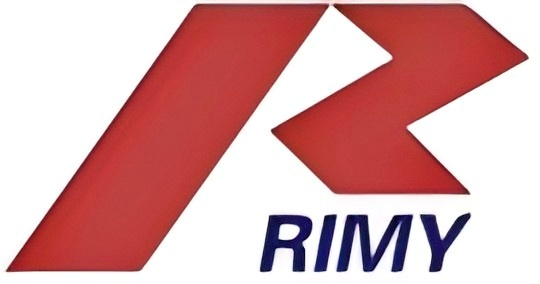Essential Guide to Maintaining Automatic Stator Winding Equipment
The performance and longevity of automatic stator winding machines directly impact manufacturing efficiency and product quality in electric motor production. Implementing a comprehensive preventive maintenance program is crucial for maximizing equipment uptime, ensuring consistent winding quality, and avoiding costly breakdowns. This detailed guide explores best practices, maintenance schedules, and expert tips for keeping your stator winding machine in optimal condition.
Core Components Requiring Regular Maintenance
Wire Feeding and Tensioning Systems
The wire feeding mechanism is critical to achieving precise and consistent windings. Regular stator winding machine maintenance should include thorough inspection of wire guides, tension controls, and feeding mechanisms. Check for wear on guide surfaces, proper alignment of feed paths, and calibration of tension settings. Clean any accumulated debris or wire residue that could affect smooth operation.
Tension control systems require particular attention as they directly influence winding tightness and consistency. Inspect springs, mechanical tensioners, and electronic sensors monthly. Calibrate tension settings according to manufacturer specifications and document any adjustments for future reference.
Rotating Components and Bearings
The rotating assembly is the heart of any stator winding machine. Bearings, shafts, and drive components need regular inspection and lubrication. Listen for unusual noises during operation that might indicate bearing wear or misalignment. Check for proper clearances and replace bearings at recommended intervals rather than waiting for failure.
Implement a structured lubrication schedule based on operating hours and conditions. Use only manufacturer-recommended lubricants and document all maintenance activities. Regular vibration analysis can help detect potential issues before they lead to catastrophic failure.
Preventive Maintenance Scheduling and Documentation
Daily Inspection Routines
Start each production day with a systematic check of critical components. This includes visual inspection of wire paths, verification of tension settings, and monitoring of basic machine functions. Operators should document any unusual observations and report potential issues immediately to maintenance personnel.
Maintain a daily log of operating parameters including production speed, tension settings, and any adjustments made. This historical data becomes invaluable for troubleshooting and predictive maintenance planning.
Weekly and Monthly Maintenance Tasks
Weekly maintenance should focus on more detailed inspections and basic preventive tasks. Clean and inspect all guide surfaces, check drive belt tension, and verify proper operation of safety systems. Monthly tasks include more comprehensive inspections, lubrication of all specified points, and calibration checks of critical systems.
Create detailed checklists for each maintenance interval and ensure proper documentation of all completed tasks. This documentation helps track maintenance history and identify recurring issues that may require engineering solutions.
Advanced Maintenance Techniques and Technologies
Predictive Maintenance Tools
Modern stator winding machine maintenance increasingly relies on predictive technologies. Vibration analysis, thermal imaging, and real-time monitoring systems can detect potential failures before they occur. Invest in appropriate monitoring equipment and train maintenance staff in proper use and data interpretation.
Implement a computerized maintenance management system (CMMS) to track maintenance schedules, spare parts inventory, and equipment history. This data-driven approach helps optimize maintenance intervals and reduce unplanned downtime.
Condition Monitoring Systems
Install sensors to continuously monitor critical parameters such as temperature, vibration, and power consumption. These systems can provide early warning of developing problems and help optimize maintenance scheduling. Regular analysis of collected data helps identify trends and potential issues before they impact production.
Train operators and maintenance personnel to understand and respond to condition monitoring alerts. Establish clear procedures for escalating concerns and initiating maintenance actions based on monitoring system inputs.
Troubleshooting and Problem Prevention
Common Issues and Solutions
Develop a comprehensive troubleshooting guide that addresses common problems encountered during stator winding operations. Include detailed procedures for diagnosing issues related to wire tension, positioning accuracy, and winding pattern consistency. Document successful resolution methods for future reference.
Build a knowledge base of maintenance experiences and solutions. This resource becomes increasingly valuable as maintenance staff gain experience with specific equipment characteristics and behavior patterns.
Preventive Measures and Best Practices
Implement standardized procedures for machine setup, operation, and maintenance. Train all operators and maintenance personnel in these procedures to ensure consistency. Regular training updates help maintain high standards and incorporate new maintenance techniques as they become available.
Maintain detailed records of all maintenance activities, repairs, and modifications. This documentation supports continuous improvement of maintenance procedures and helps identify opportunities for equipment upgrades or modifications.
Frequently Asked Questions
How often should tension control systems be calibrated?
Tension control systems should undergo calibration checks at least monthly, with full calibration performed quarterly or whenever significant variations in winding quality are observed. Always document calibration results and maintain records of adjustment trends.
What are the key indicators that bearings need replacement?
Watch for increased noise levels, unusual vibration patterns, or elevated operating temperatures. Regular vibration analysis can detect bearing wear before it becomes critical. Replace bearings according to manufacturer recommendations or when monitoring indicates deterioration.
How can we optimize our preventive maintenance schedule?
Analyze historical maintenance data and equipment performance metrics to identify optimal maintenance intervals. Consider implementing condition-based maintenance using monitoring technologies. Regular review and adjustment of maintenance schedules based on actual equipment performance helps maximize efficiency while minimizing downtime.

